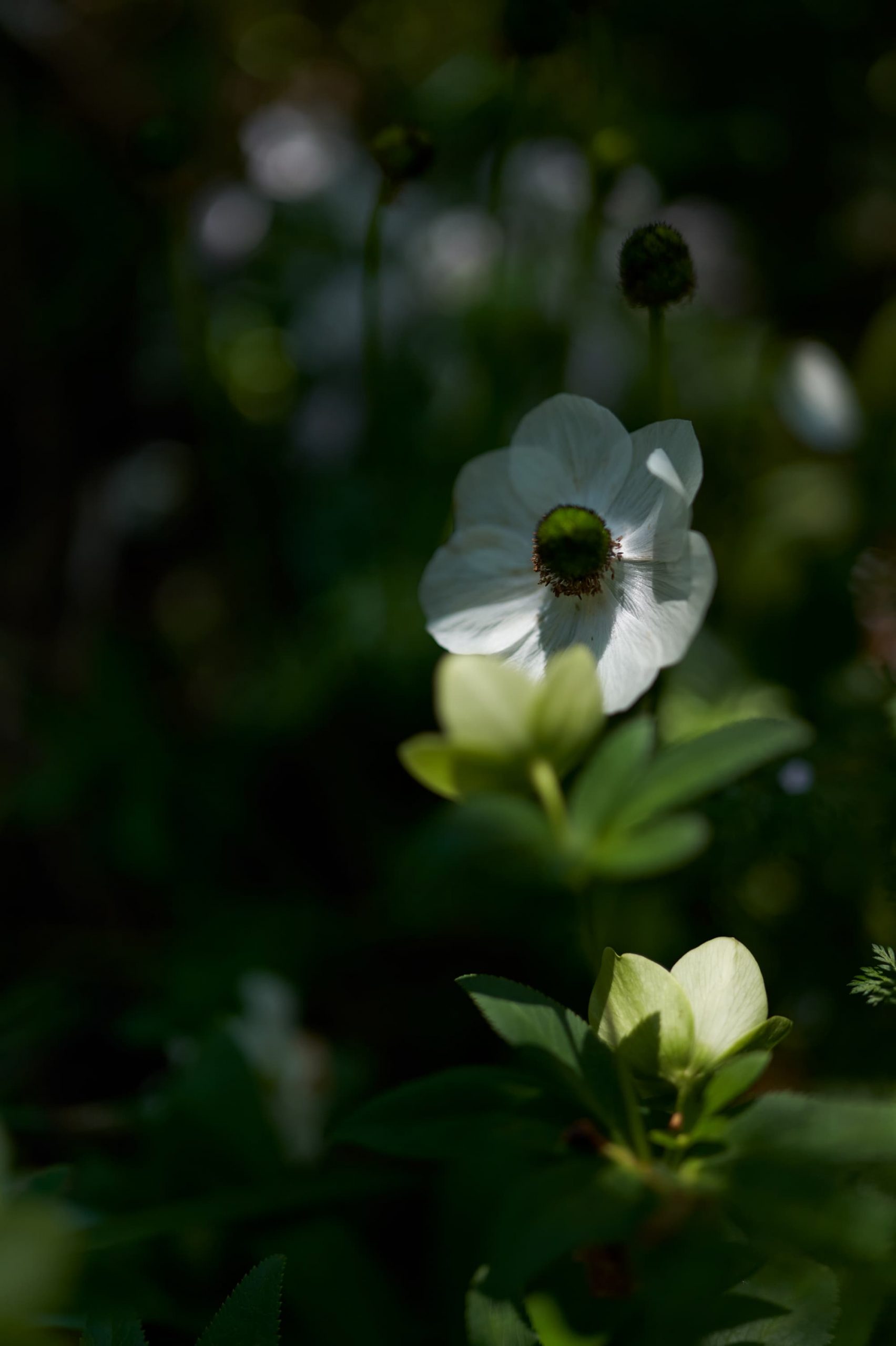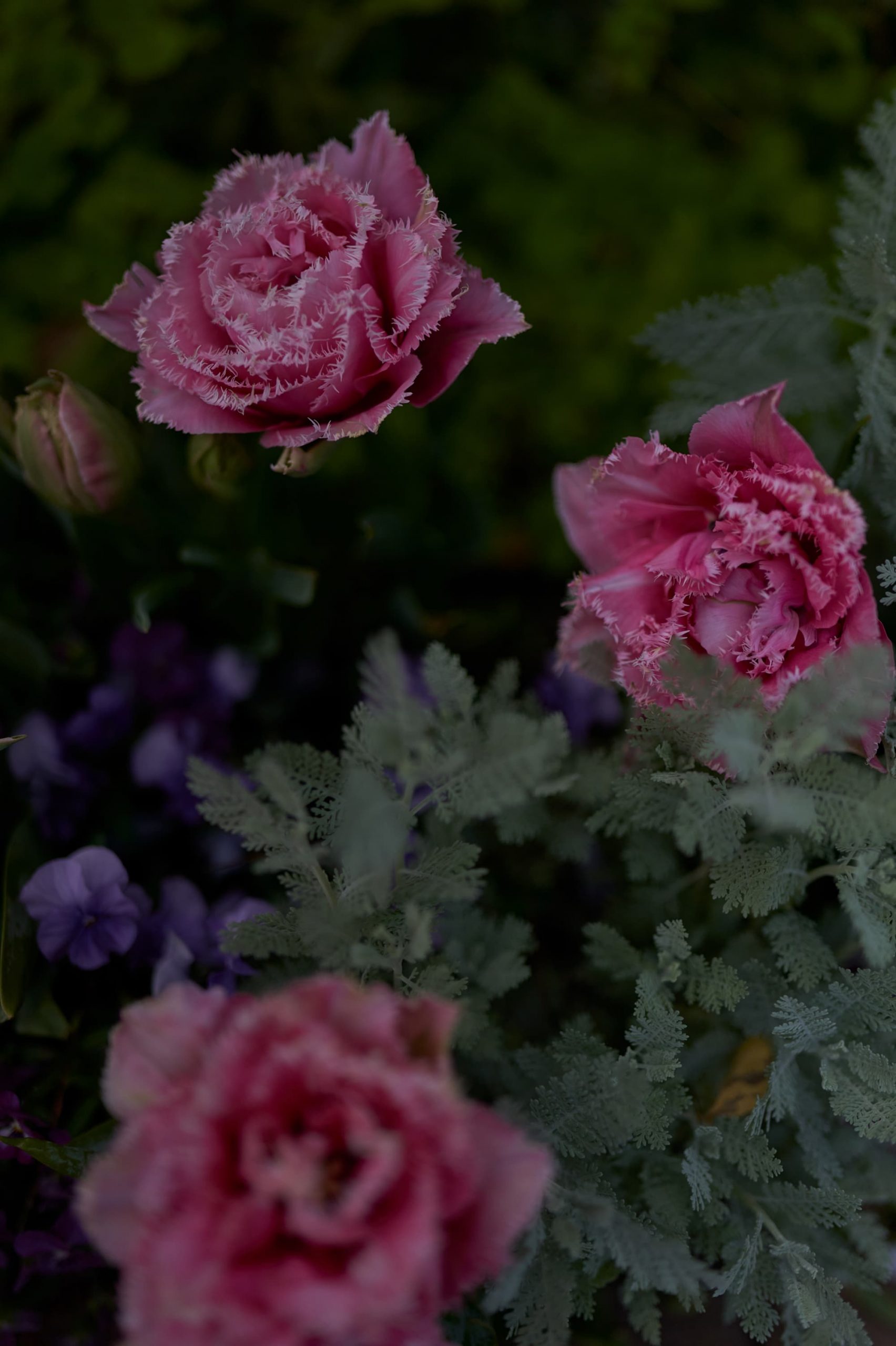

35mm F1.2 DG DN | Art Impression
It is persuasive that SIGMA finally releases a F1.2 lens because they have been making this many large-diameter fixed-focal lenses in these days. If they further pursue the joy and possibility of photography, it is no wonder they would move to the next level of F1.2. Advancement of digital cameras requires better optical performance of lenses. SIGMA must be very confident because they chose to release the F1.2 lens when we do not always have to be afraid of increasing sensitivity anymore.
The test began with portraits. The underground location had a piano and a very weak indirect sunshine because of the thick clouds. In such a tough condition, the only thing I can trust is lens performance itself. As soon as I started shooting, I felt like I was shooting with a larger format.
This composition is typical with the 50mm. Rendition is very sharp to the corners despite the very shallow focal depth for the 35mm. Just as F1.4 and F1.8 are different from each other, F1.2 has its own world. Looking into the viewfinder, I was listening to Scriabin (Russian composer) that she was playing. It was ephemeral and beautiful. A performer embodies the world s/he has and this is what I wanted to express. Vignetting is incredibly well-controlled for the maximum F-number, but not completely eliminated to the extent to be tasteless. It pleasantly emphasizes the subject.
With the F1.2 shallowness, the subject does not always have to be close in order to pop out. The rich gradation also works to reproduce the atmosphere.
The intense sunshine is reflecting and defusing. This is a mean condition for a lens test, but the color reproduction is still rich and the subject’s edge line in focus looks sharp. The high image quality at wide open lets photographers express as freely as possible. Focal depth becomes paper-thin in close distance. Bokeh is not meltingly creamy, but never gets noisy and distracting.
Model: Chinami Yamaguchi
She is a pianist who plays at recitals and ensemble concerts in Japan. Likes hot food and has a lovely gap between appearance and personality.
Intoxicating F1.2
By looking at these colorful flowers, I understand why Japan is said to be a beautiful country. I shot flowers in a variety of lighting conditions including soft spring light, backlight, and sunbeams streaming through leaves. These images replicate the very scenes that I saw. Color reproduction is clear to the corners. Bokeh is ravishingly beautiful. Again, chromatic aberration is minimal even around the edge lines in the highlight. Unlike many ultra large-diameter lenses, this lens does not get soft even at wide open and can express the moisture in the air. It can reflect photographer’s intention directly.
The petals look genuinely pretty and realistic. The sharp rendition of the cells of the petals in focus is simply stunning. The background bokeh also demonstrates the richness of tonality.
Rendition is delicate even under the low light condition. This atmosphere of image cannot be realized without the high performance.
Delicate and precise rendition
I truly enjoyed testing this new Art line lens, the first F1.2 lens from SIGMA. Bokeh is dreamy and gradation is rich. Extremely low aberration even at wide open only adds to the reality of images. This lens definitely invites photographers to thenew world of photography.
Minimized sagittal coma flare
As I have been told that sagittal coma flare is significantly reduced with this lens, I shot night scenes with point light sources to check how they are depicted. Most large-diameter fixed-focal lenses are prone to have sagittal coma flares, which is most noticeable with point light sources having bird-shape flare. The 35mm F1.4 DG HSM | Art released 7 years ago is very popular for the outstanding sharpness and beautiful bokeh. However, the latest cameras with more pixels and higher resolution can display the potential weakness of large-diameter lenses. To test how well this lens handles the issue, I made side-by-side comparisons of night shots taken with this lens and the 35mm F1.4 DG HSM | Art for the E-mount. The subjects I chose were buildings in Marunouchi, Tokyo because they have all sizes of light sources. I fixed the camera on a tripod and shot under the same conditions except for the maximum F-number. Here are the results.
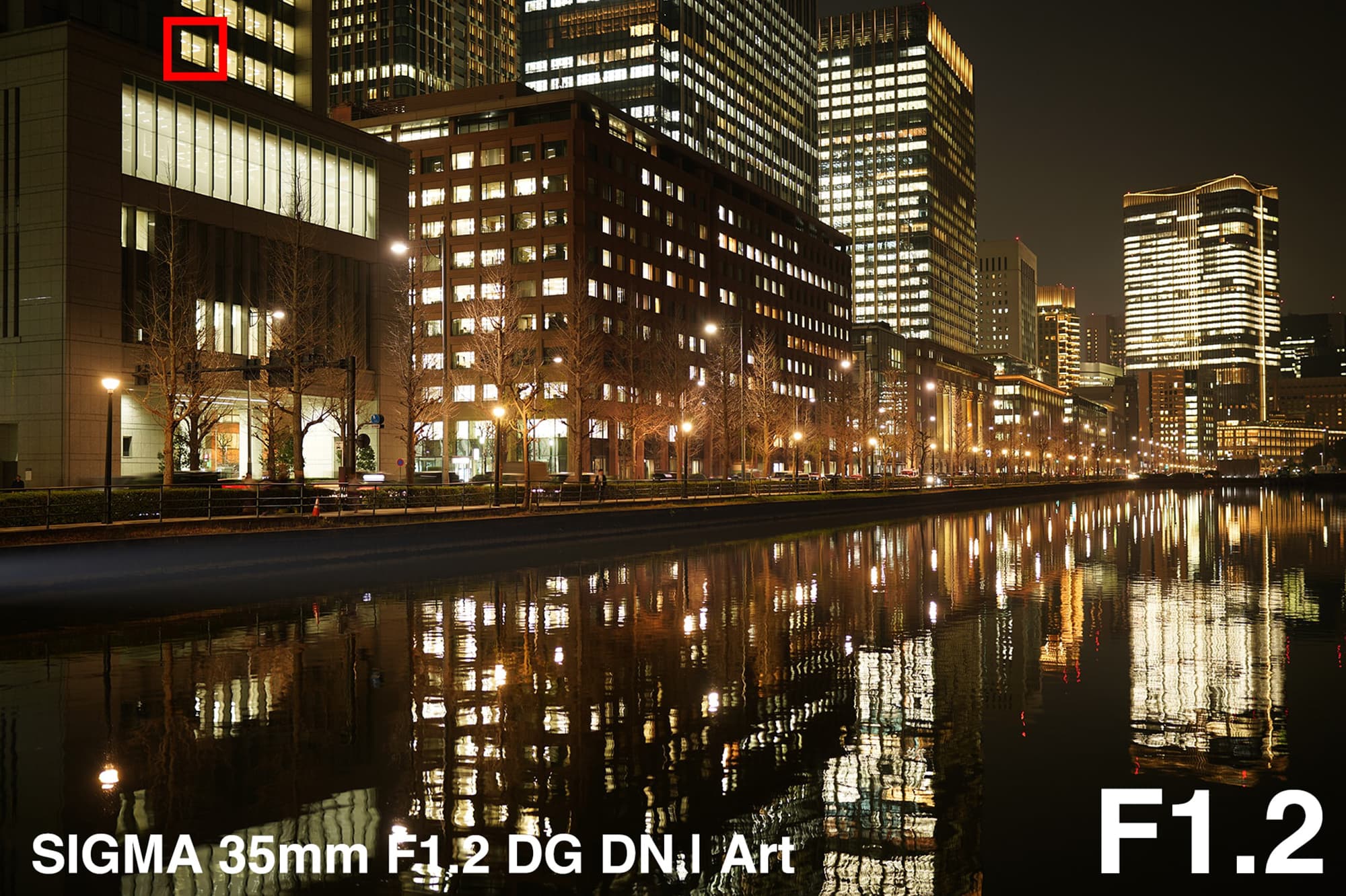
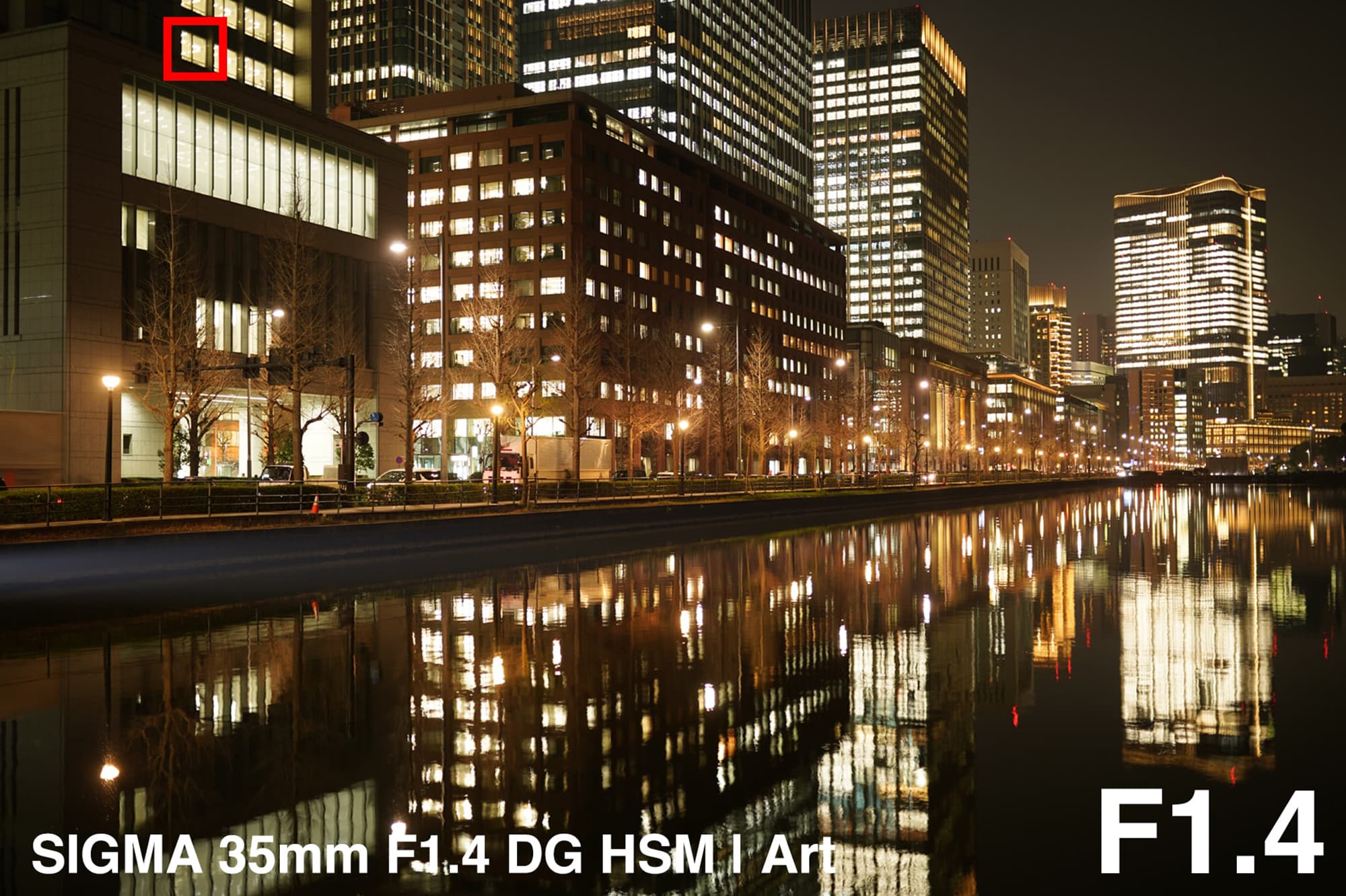
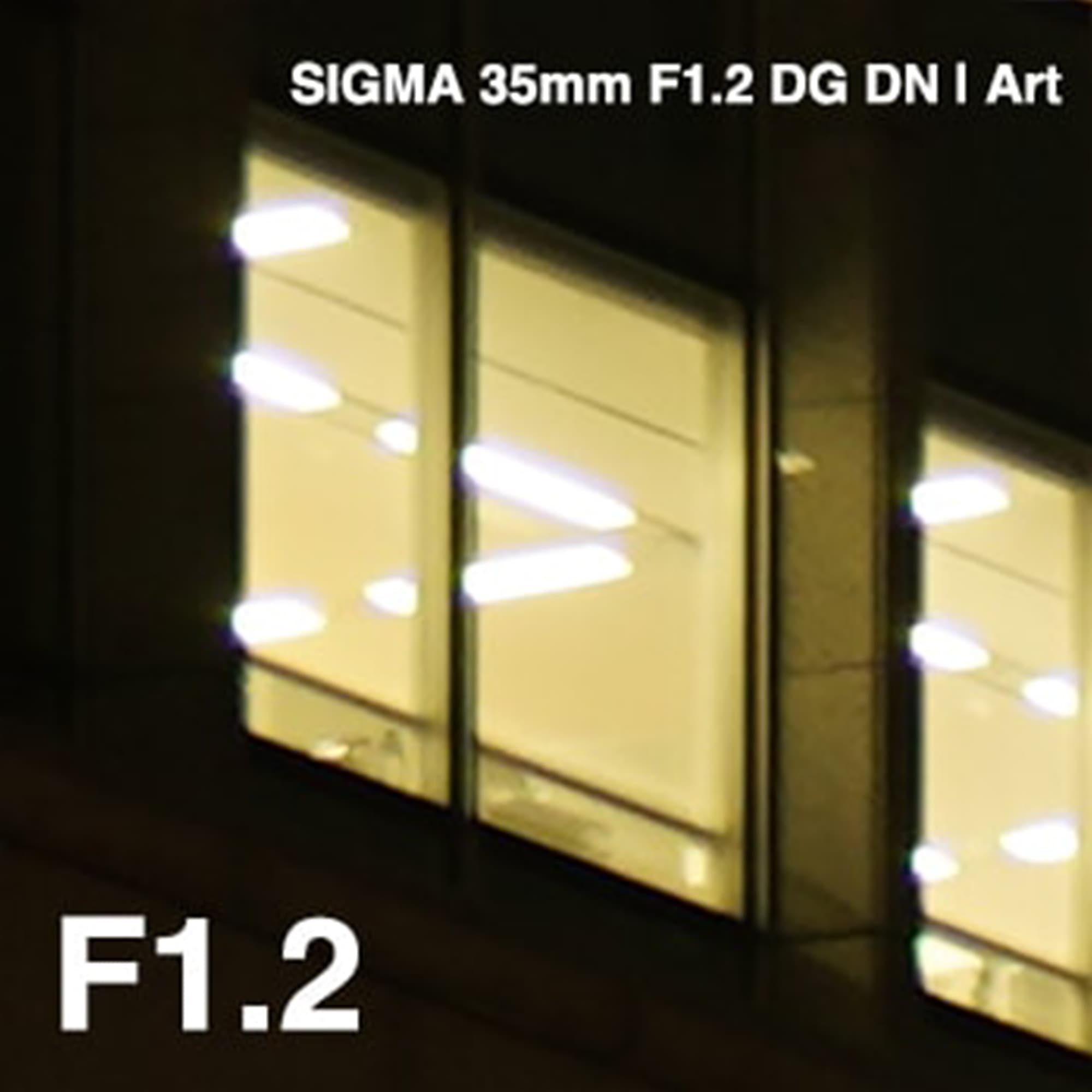
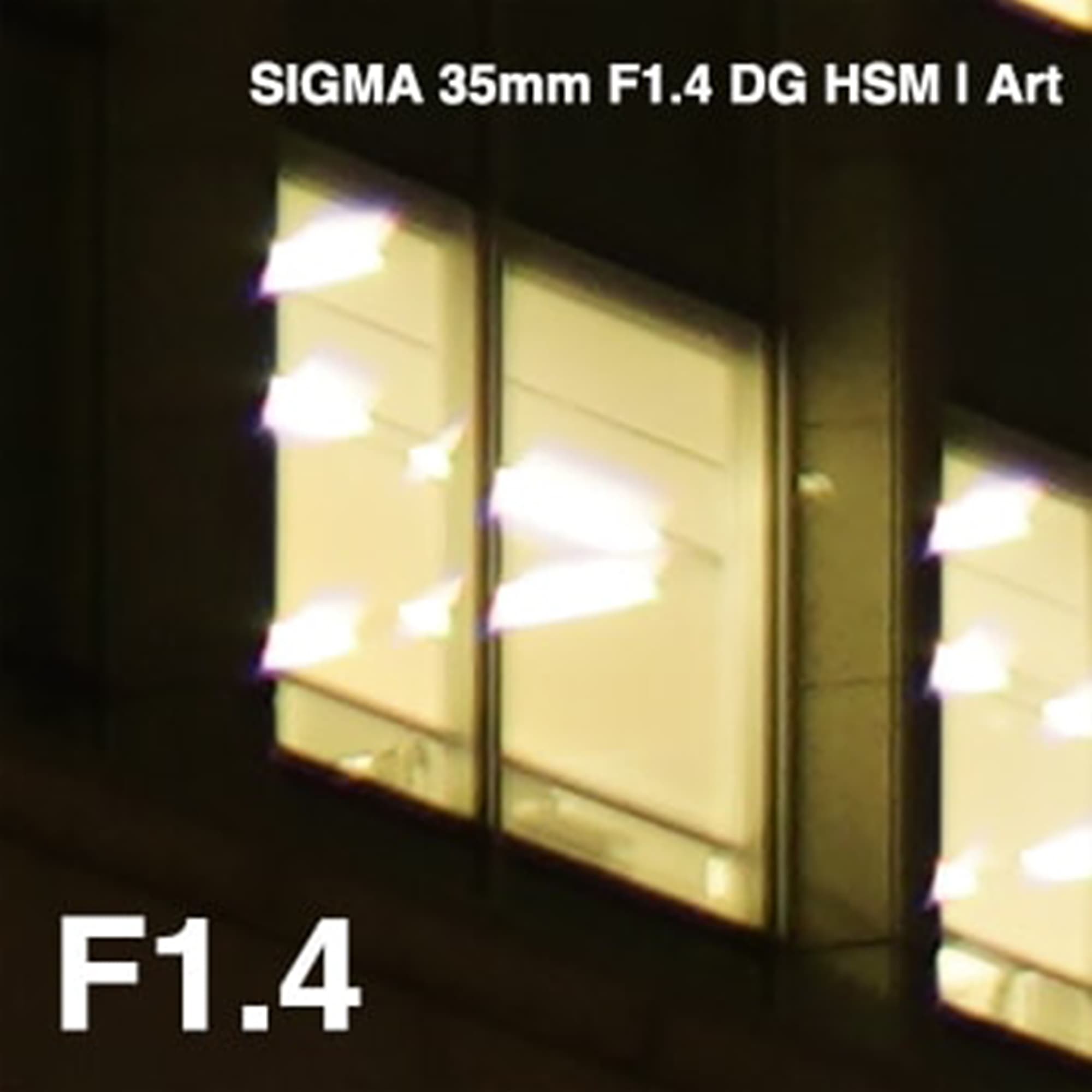
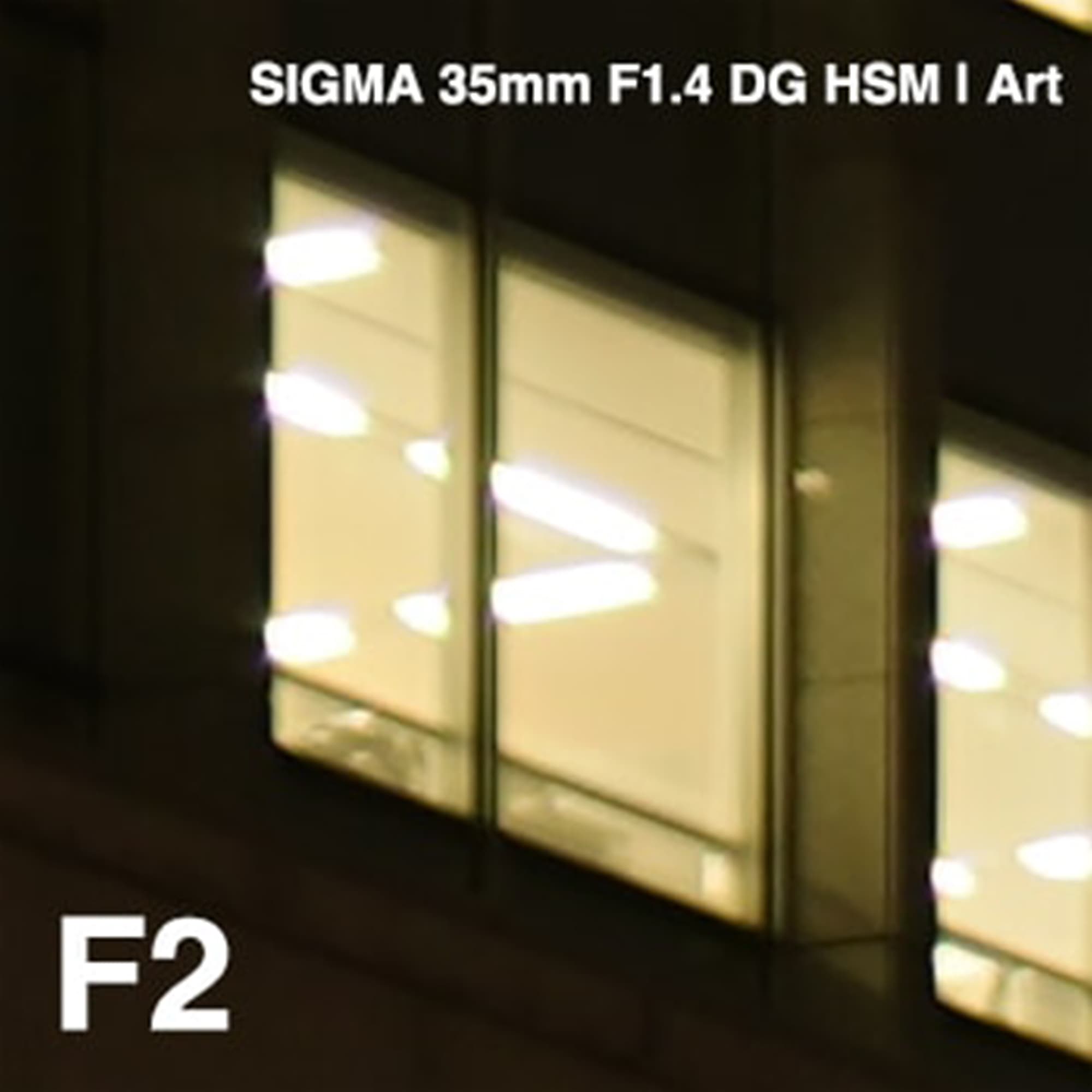

If you take a look at the enlarged images of the red box sections, you will see sagittal coma flare with the 35mm F1.4 DG HSM|Art (for Sony E-mout) at wide open. Surprisingly, on the other hand, it is minimal with the 35mm F1.2 DG DN|Art and the 35mm F1.4 DG HSM|Art needs to be stopped down to F2.8 to match the 35mm F1.2 DG DN|Art. In other words, the 35mm F1.2 DG DN|Art has at least 2-stop advantage in terms of sagittal coma flare. When shooting stars, we want lower noise and faster shutter speed to stop them. This lens powerfully facilitates shooting night scenes and stars as well.






